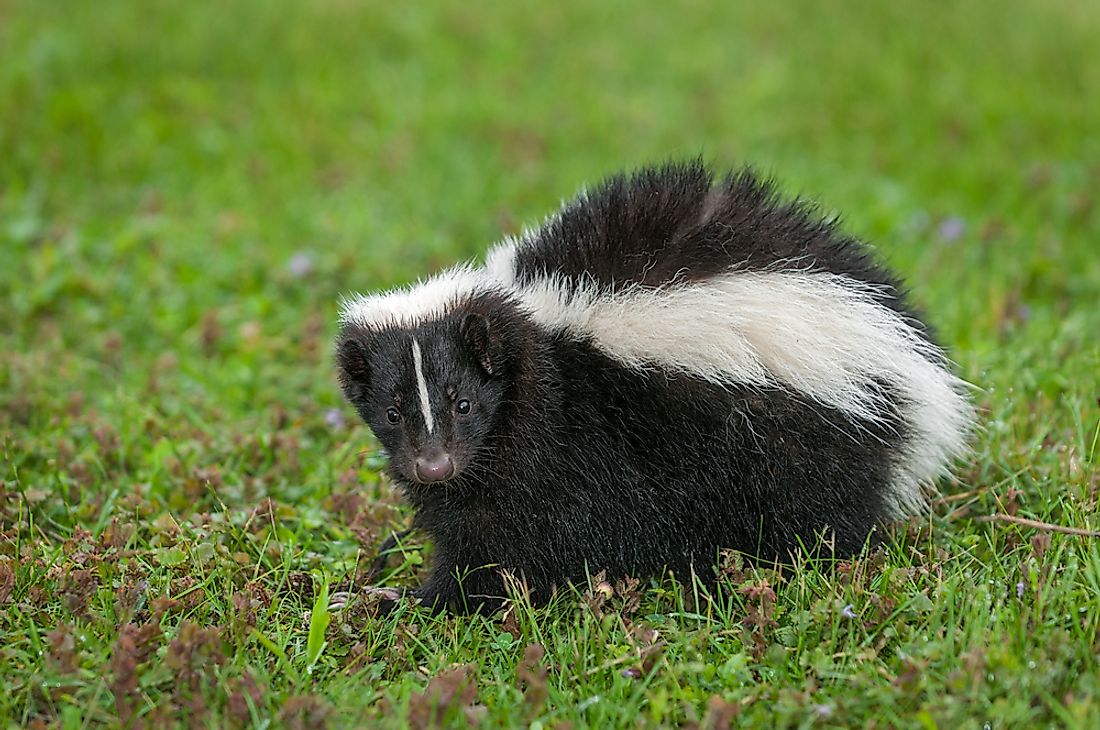What Do Skunks Eat?

Skunks are mammals that use their body odor as a defense mechanism. There are different species of the skunk with each species having a warm coloration and varying appearances from black and white, to brown, cream, or ginger colors. They are identified by their thick coating of fur, strong forefeet, and long claws. Skunks live for an average of four years in the wild, and weigh about 30lbs. They are extremely adaptable animals that thrive in different habitats if food and shelter are available. Since they rarely travel more than two miles, skunks usually set up their dens within a 2-mile radius to a waterhole. Dens are usually in tree hollows, logs, brush piles underneath porches, or abandoned animal burrows.
When it comes to feeding, skunks are omnivorous animals that prey on small creatures and feed on plant matter depending on the season and availability. Since they are not equipped with the killer instinct, they prefer to prey on smaller animals that do not pose a challenge. Their feeding habits are constant and only change in winter when their major source of food is scarce. Since they do not hibernate, they will always be out during the day and at night searching for whatever source of food available.
Small Prey
The skunk’s diet comprises of insects such as cockroaches, beetles, and grasshoppers. Although their potent lingering odor is considered a nuisance to human beings, skunks help in getting rid of destructive insects around homesteads. They also feed on small helpless animals, such as ground-nesting birds and voles. When visiting the waterholes, skunks also hunt for fish, frogs, and water snakes. During winter, skunks scavenge on field mice, rabbits, and portly eggs as a last resort diet.
Skunks are one of the major predators of the honeybee, relying on the thick tuft of fur on their bodies to protect them from stings. They usually scratch the front of the beehives with their strong forefeet and long claws, then feed on the guard bees who come out of the hive. They often feed on snakes and the treacherous black widow spider, which are considered a nutritious diet for the skunks and teach their young ones self-defense mechanisms from these dangerous animals.
Plant Life
During winter and fall, the skunk’s favorite diet is not usually available so they adopt a plant-based diet. In these cold months, only a few insects and prey are available which causes skunks to feed on plants such as corn, cherries, grapes, and berries, which emerge in winter. They usually collect food that has dropped to the ground due to accessibility. Roots and fruits comprise their favorite diet, and hence most skunks visit homesteads to feed on decaying plant life considered a nuisance to human beings.
Garbage
Being omnivorous creatures, skunks are not selective feeders, and thus feed on what is available. An unattended litter-bin is home to insects, rodents, and rotting food. Skunks deviously raid garbage bins and dumpsters looking for their favorite meals. At times when no food is available, skunks may go to bird feeders, compost piles, and grills which results can result in clashes between humans and animals.











